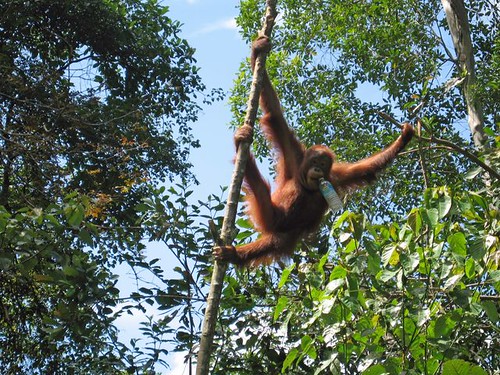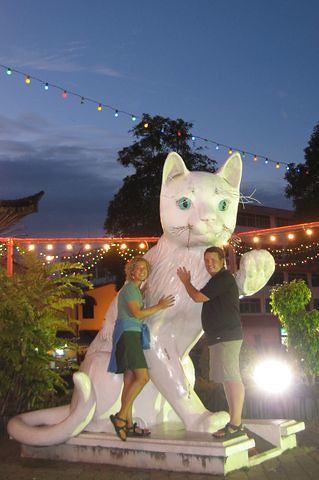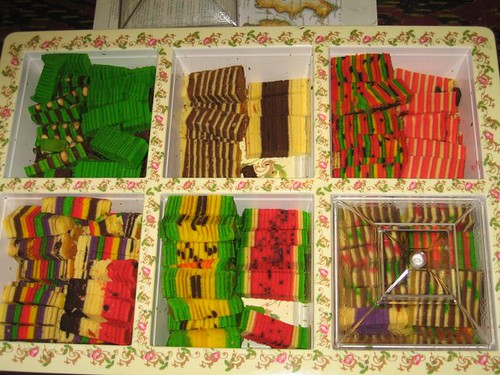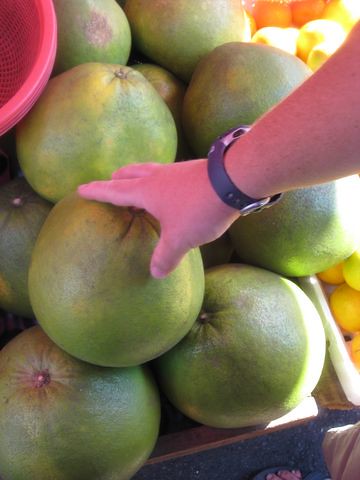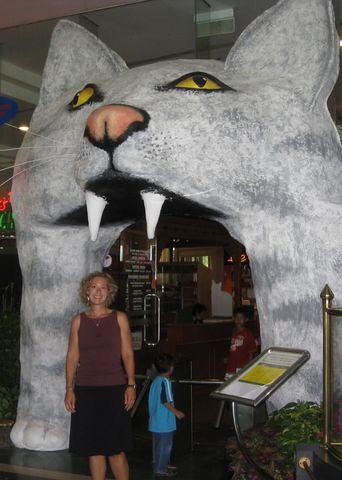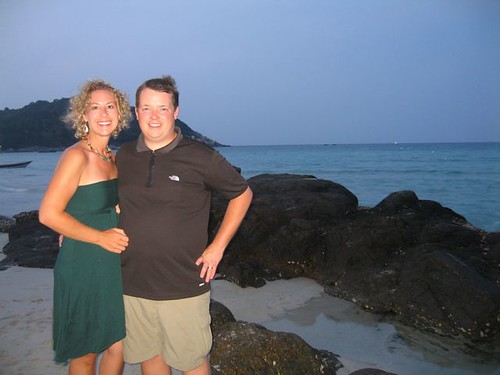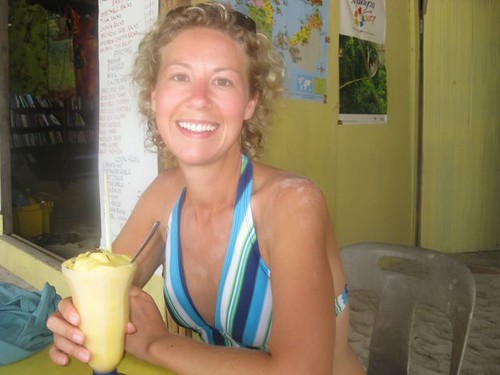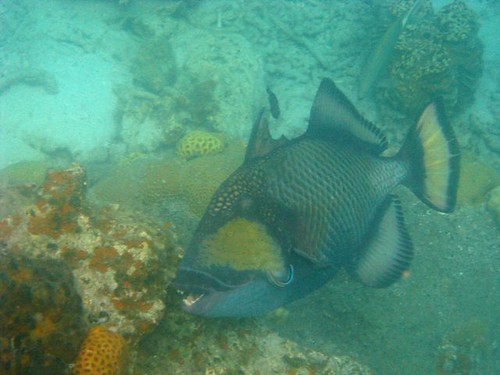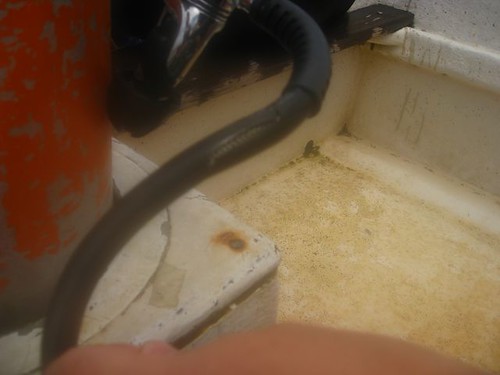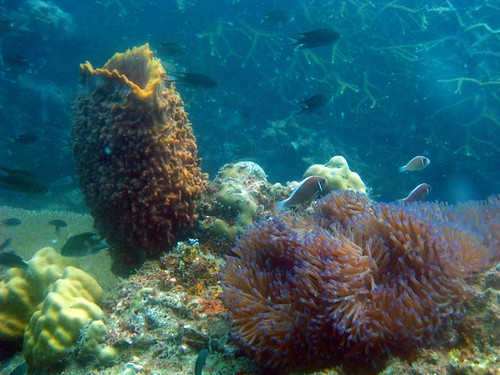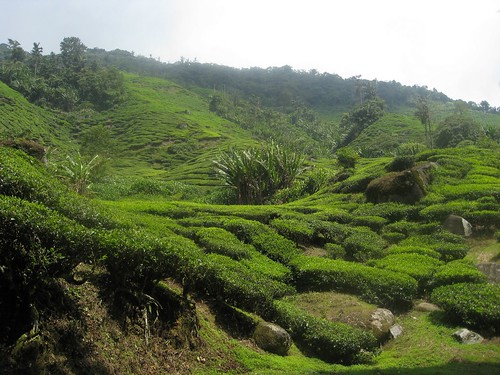Stats:
Destination: Singapore, both city and state Number of Days there: 3
Our Best of: Admiring how orderly and efficient everything here works, Night Safari
One thing unexpected: The shopping malls on EVERY corner, you have to walk through one to get to where you are going in a lot of cases.
Times we took the: Bus: 2 Train/Subway: 8 Taxi/Car: 0
Estimated KM walked: 15-20 km (far enough to get blisters!) Times we were “lost”: 0
Where we stayed: Backpackers Cozy Corner S$50
Favorite Restaurants: The two main Hawker centers - Lau Pa Sat and Maxwell Road Food Center
Total "Fines" accumulated had we actually been caught doing them: $1100 (jaywalking carries a $100 fine)
Day 1: Chinese food scented hostels, Wheel of Food, one quirky riverfront
We arrived mid morning on the night bus from Perhentian and headed over to the hotel we had in mind, the New Seven Storey. Unfortunately, it was full and they suggested the Cozy Backpackers Corner around the corner from them. While it was adequate, it was by no means up to standard; especially considering that it now has the dubious distinction of not only being our most expensive hotel, but also the dirtiest. Add on the fact that it sits right above a Chinese restaurant that shares that same wonderful aroma with your clothes and we were ready to leave fairly quickly. It's one saving grace was the friendly lady behind the desk that was always helpful with answering our questions. Since we were only staying two nights, it was not really worth it to switch so we settled, dropped off our bags, and took to the streets.
Singapore sits at the tip of mainland Asia making it a significant trade port for the region. Bustling business centers of both local and foreign companies give it a lively, and yet, squeaky clean image. With every road clearly marked and a well laid out subway and bus system this is one of the easiest places to get around. We decided to take a stroll through Little India first.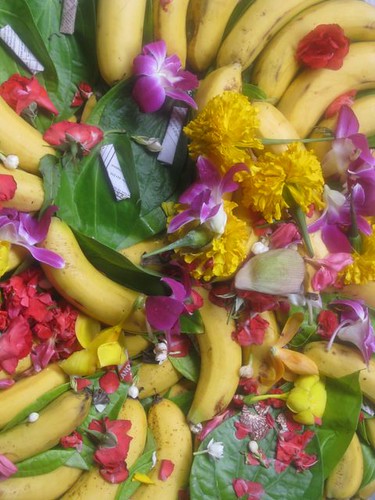
 Much like KL, Singapore has become a melting pot of cultures, religions and languages. While English seems to be the more prominent language, Cantonese (Chinese) is a close, if not more widely understood, language of the city. The English spoken here is difficult to understand and really seems to be a foreign language onto itself. Little India has the usual mix of temples and shops. Being a holiday weekend (their independence day from Great Britain) the streets were filled with locals shopping, quite the past time here (but more on that later), the devotees hitting the temples and even a little remote control car racing in the park. Showing the true mixture of the city, right next to a Hindu Temple was a Mosque, which was around the corner from a Chinese Buddhist temple. After strolling though and hitting a few of the temples, we hopped on the subway and made our way down to the business center.
Much like KL, Singapore has become a melting pot of cultures, religions and languages. While English seems to be the more prominent language, Cantonese (Chinese) is a close, if not more widely understood, language of the city. The English spoken here is difficult to understand and really seems to be a foreign language onto itself. Little India has the usual mix of temples and shops. Being a holiday weekend (their independence day from Great Britain) the streets were filled with locals shopping, quite the past time here (but more on that later), the devotees hitting the temples and even a little remote control car racing in the park. Showing the true mixture of the city, right next to a Hindu Temple was a Mosque, which was around the corner from a Chinese Buddhist temple. After strolling though and hitting a few of the temples, we hopped on the subway and made our way down to the business center.
As we walked toward one of the hawker centers, Lau Pa Sat which straddles the Business District and Chinatown, we started to wonder if we were even in the right place. The bustling streets from earlier were replaced with towering buildings and high rises, construction zones laying silent and not a soul in sight. Just as we thought we had made a wrong turn somewhere, right in front of us was our first food destination - hawker center Lau Pa Sat. Singapore, in an effort to keep the streets clean and tidy, basically has outlawed street vendors except for in designated areas. It's an interesting concept, but it does make it easier to choose your meal. Like spokes on a wheel, the center sprawls out into eight lanes, all lined with food vendors trying to get you to be their next customer. At the hub of the wheel, you find most of the beverage and dessert vendors. At nights, one of the side streets also comes to life with satay (grilled meats over a charcoal flame) masters firing up their grills and adding into the fun. We settled on the stall that sold vegetarian Indian food (quickly becoming our favorite fare in the region) at the name-your-price cost. It's an interesting concept and one that I hope catches on, you pay what you feel is fair. Aside from the interesting concept, it also was delicious with a friendly server that just kept smiling when we asked what he felt was fair to pay.

After dinner we made our way down to the riverfront. While it's not exactly the most picturesque riverfront in the world, they seem to be trying to reinvest in it and make it world class. Cente
red in between two large construction zones was the newly constructed Esplanade Center (looks like two huge durians and houses the opera and the theater) and a Merlion (yep a mermaid with a lion's head) fountain. Both structures just add to the quirkiness that is Singapore.
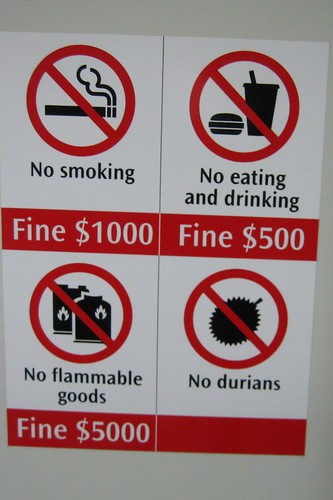
Ah yes, the weird side of Singapore. To keep that clean image, the country has a fine for just about anything that they deem offensive. It's $100 for jaywalking, $100 for smoking anywhere in public ($1000 on the subways) $500 for eating or drinking on public transport and just bringing that durian (one stinky fruit that they sell in separate markets away from other foods) on the subway will cost you $500(unless I am reading the sign wrong)! In addition to all the wonderful fines, they also like to put the fear of god into the public. Dengue fever apparently is caused by not emptying out your bamboo pole holders (whatever that is and only the bamboo variety will cause such things?!) At every subway stop, a public service video plays on a loop letting you know what to do if someone looks suspicious or leaves a bag behind on large TV screens. It's $5000 if you accidentally hit the panic button, which is not that hard to hit. That is assuming that the average Singaporean would even notice. It's a city that seems to be obsessed with electronics. There are entire shopping malls dedicated to computers and gaming and almost everyone on the subway has at least the cell phone out texting someone or some form of handheld game (PSP, DS, Gameboy, etc.) or in some cases, both at the same time. I must admit that being a occasional gamer myself and my love of electronics I could move right in.
the panic button, which is not that hard to hit. That is assuming that the average Singaporean would even notice. It's a city that seems to be obsessed with electronics. There are entire shopping malls dedicated to computers and gaming and almost everyone on the subway has at least the cell phone out texting someone or some form of handheld game (PSP, DS, Gameboy, etc.) or in some cases, both at the same time. I must admit that being a occasional gamer myself and my love of electronics I could move right in.
 Moving along, we ended the night with the Fountain of Wealth, the world's largest fountain. It's not quite how I imagined it, one huge steel circle and in the center lies basically a water main that fans out the water. Certainly not the most picturesque fountain we have seen but impressive non-the-less. As we were walking around it we noticed that in the middle of the water, a cartoon was being shown right on the water. Adding to the ambiance was the nightly DJ cranking out the dedications, ala Casey Casum and, yep, another shopping mall attached. After the cartoon was done playing, the main blast of water shuts off and turns into several little fountains right in the center where people walk around it three times for good luck. We took our turn walking around the fountain while jamming out to Bon Jovi's "Living on a Prayer" and decided we had had enough of Singapore for one day and returned to the Hotel.
Moving along, we ended the night with the Fountain of Wealth, the world's largest fountain. It's not quite how I imagined it, one huge steel circle and in the center lies basically a water main that fans out the water. Certainly not the most picturesque fountain we have seen but impressive non-the-less. As we were walking around it we noticed that in the middle of the water, a cartoon was being shown right on the water. Adding to the ambiance was the nightly DJ cranking out the dedications, ala Casey Casum and, yep, another shopping mall attached. After the cartoon was done playing, the main blast of water shuts off and turns into several little fountains right in the center where people walk around it three times for good luck. We took our turn walking around the fountain while jamming out to Bon Jovi's "Living on a Prayer" and decided we had had enough of Singapore for one day and returned to the Hotel.
Day 2: Chinatown Pt. 1, The Zoo, The Night Safari
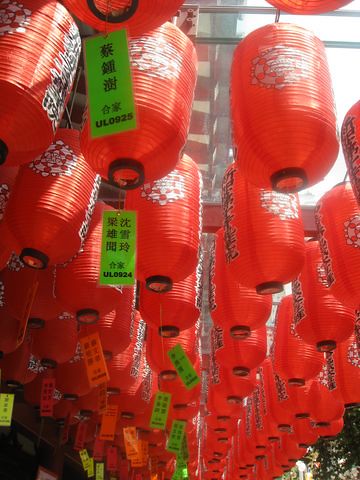 We started off our second day in Singapore by heading over to Chinatown to try and catch one of the most famous wet markets in the world, Kreta Ayer, named after the street it's on. After walking the length of Kreta Ayer and not seeing one thing that resembled a market, we stopped and asked someone. They pointed to a building around the corner that ended up being Maxwell's Food Center, one other hawker food center in town. Not quite ready for lunch we wandered around a little more in search of the infamous wet market. After finally finding it, in the basement of a...shopping mall...it was a little too quiet to be a wet market. That's when we realized that because of the holiday, hardly any of the stalls were open. We decided to just come
We started off our second day in Singapore by heading over to Chinatown to try and catch one of the most famous wet markets in the world, Kreta Ayer, named after the street it's on. After walking the length of Kreta Ayer and not seeing one thing that resembled a market, we stopped and asked someone. They pointed to a building around the corner that ended up being Maxwell's Food Center, one other hawker food center in town. Not quite ready for lunch we wandered around a little more in search of the infamous wet market. After finally finding it, in the basement of a...shopping mall...it was a little too quiet to be a wet market. That's when we realized that because of the holiday, hardly any of the stalls were open. We decided to just come

back in the morning and head back to Maxwell's for lunch. The layout of Maxwell's was a little more straightforward than Lau Pa Sat; 3 straight rows that stretched down the block. We noticed that two stalls in particular had lines that stretched out into the walking spaces, one was for "porridge" noodles in a soupy broth with several choices of meat; and the other for "fish head soup" which I think you can figure out the ingredients of that dish. We decided to give the porridge a try and "Q'ed" up (stood in line). After 15 minutes had passed and they had served only one customer, we decided that the porridge would have to wait and took our second choice, the little Thai stand at the other end of the center. Bellies full of tasty pad thai (you can't go wrong with this dish), we jumped back on the subway and headed for the zoo.
The Singapore Zoo is considered one of the best in the world and since we really didn't want to shop, and the other "main" attraction in Singapore is a fake island (metal trees, piped in music, etc.)called Sentosa, we opted to spend the time at the zoo in the afternoon and then the Night Safari next door at night. The zoo is huge and is home to a white tiger, family of orangutans (that pose for pictures at set times for $5), the infamous Komodo Dragons, and all your other basic zoo animals. While it's certainly not the worst way to spend an afternoon, it's more or less like any other zoo - caged and staged.
The Night Safari on the other hand, was, in our opinion, worth the time. While it may seem like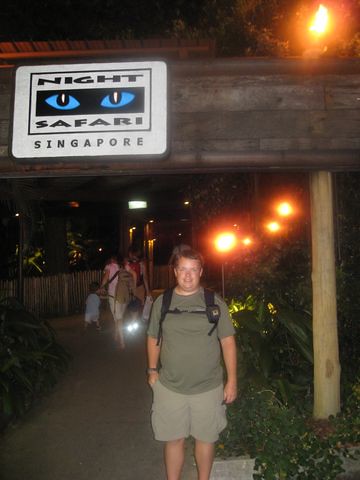 it's the zoo, it's actually an entirely different section with it's own animals. There are three trails you can walk down passing by anything from a cute little family of river otters that squeak in
it's the zoo, it's actually an entirely different section with it's own animals. There are three trails you can walk down passing by anything from a cute little family of river otters that squeak in
fear when they see you, to bat-like flying foxes (they are actually quite large) to larger animals like tigers. Since most of the animals are nocturnal they were much more active than what you usually see in a zoo. In addition to the walks, you can also ride a tram that takes you around the park and to areas that are not "safe" to walk around in. The guided commentary and cool breezes were a nice break in between the walking trails. They also have a show, which is cute and slightly entertaining, but the other people in the audience that cannot seem to understand the concept of "no flash photography" or "please do not call the animals, you are delaying the show" got a little old. After just making it onto the last bus to the last train back into town, we headed back to the hotel to rest our now blistered and tired feet for the night.
Day 3: Chinatown Pt.2, Asian
Cultural Museum, back to Malaysia
We decided that we would give the wet market another shot and this time we were not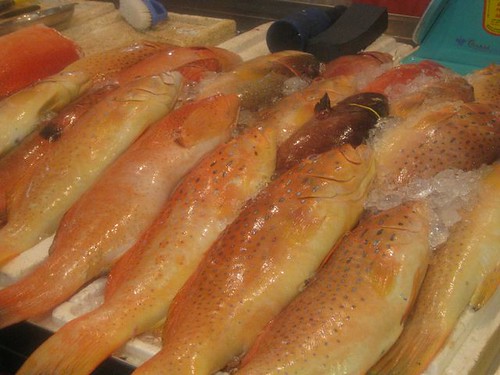 disappointed. What was quiet the day before, was now bustling with tons and tons of fish, chicken and pork for sale. There was even a row of more exotic items for sale like turtles and frogs. Being Singapore, this wet market was a little more clean and "upscale" than others we have been to. No dark alley ways here and it was very clean. Sadly, it does appear that this form of shopping for meats and vegetables is coming to an end. There were few people actually shopping, and the ones that were were significantly older than your average consumer. With supermarkets becoming more and more popular, I wonder how much longer these type of venues will be around. Only time can answer that, but for now, it's an experience that we rarely miss when given the opportunity.
disappointed. What was quiet the day before, was now bustling with tons and tons of fish, chicken and pork for sale. There was even a row of more exotic items for sale like turtles and frogs. Being Singapore, this wet market was a little more clean and "upscale" than others we have been to. No dark alley ways here and it was very clean. Sadly, it does appear that this form of shopping for meats and vegetables is coming to an end. There were few people actually shopping, and the ones that were were significantly older than your average consumer. With supermarkets becoming more and more popular, I wonder how much longer these type of venues will be around. Only time can answer that, but for now, it's an experience that we rarely miss when given the opportunity.
After hitting the wet market, we returned to Lau Pa Sat for one last lunch at the same vegetarian Indian stall and walked over to the Asian Cultural Museum. Sitting on the banks of the Singapore River where Sir Raffles (founder of modern day Singapore) first landed is the Asian Cultural Museum. The museum not only covers the history of Singapore itself, but the entire region as a whole. It covers the spread of religions in the region as well as all the kingdoms, arts, and European influences over the years. It was very educational and we wished that we had carved out more time to explore it in depth. They also had a special exhibit on Vietnam which went into depth on the tribes that became kingdoms and eventually to the communist society it is today.
Leaving the museum behind, we grabbed our bags and headed for the bus station. Since the flights from Johor Bharu (Malaysia and sister city to Singapore) are quite a bit cheaper than the flights from Singapore to Kuching, we had to clear immigration back into Malaysia. It's not that
difficult to do, but one word of caution - do NOT follow the signs that say "This way to Buses for Johor Bharu" For whatever reason, there are no less than 6 signs that hang down and say that, but if you do, apparently you end up walking across the bridge instead of actually taking the
bus to Johor Bharu. Instead, when you come down the escalator after clearing Singapore immigrations, turn to your right and there the buses will be. Go figure. After clearing immigration and customs for Malaysia, we jumped in a taxi with a fellow traveler and made our way to the airport in Johor Bharu, which was a lot nicer than we had imagined.
We boarded the plane problem free and landed safely in our next stop: Kutching, Sarawak.
For more pictures of Singapore please click here.
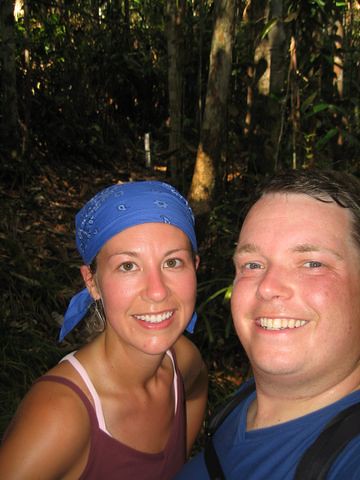 The park is one of the few places in Sarawak where you can see all four of the main eco-systems: mangrove forest, dense forest, primary rainforest and kerangas (a plateau of rock facings and shrubs). We decided to tackle the toughest hike on our list the first day so we could relax the second and we started with the Paku Trail (1.2 KM). This trail is known for sightings of proboscis monkeys which are found only in Borneo. They are strange looking little creatures with long noses and pot bellies. We only saw a couple of them and they were quite far up in the trees so we were a bit disappointed but we figured that we might see them on other trails. The hike was a hot and sweaty affair (love that SE Asian humidity) and took about 90 minutes round trip. It ended at a secluded little beach. I wished we could have stayed longer but we had other trails to conquer! Our next hike was the Lintang Trail (5.25 km). It's a loop trail that Lonely Planet recommends as it covers a good area of the park and provides an overview of the vegetation in the area including the sandstone kerangas. It took 3 1/2 hours to cover and the initial 40 minutes of the hike was extremely steep. After 90 minutes the trail leveled off and we hit the kerangas The lack of shade on the kerangas made the hike intensely hot. Overall it was our least favorite hike in Bako, we didn't see any wildlife and the vegetation wasn't very different from the other hikes we completed. We finished the day with
The park is one of the few places in Sarawak where you can see all four of the main eco-systems: mangrove forest, dense forest, primary rainforest and kerangas (a plateau of rock facings and shrubs). We decided to tackle the toughest hike on our list the first day so we could relax the second and we started with the Paku Trail (1.2 KM). This trail is known for sightings of proboscis monkeys which are found only in Borneo. They are strange looking little creatures with long noses and pot bellies. We only saw a couple of them and they were quite far up in the trees so we were a bit disappointed but we figured that we might see them on other trails. The hike was a hot and sweaty affair (love that SE Asian humidity) and took about 90 minutes round trip. It ended at a secluded little beach. I wished we could have stayed longer but we had other trails to conquer! Our next hike was the Lintang Trail (5.25 km). It's a loop trail that Lonely Planet recommends as it covers a good area of the park and provides an overview of the vegetation in the area including the sandstone kerangas. It took 3 1/2 hours to cover and the initial 40 minutes of the hike was extremely steep. After 90 minutes the trail leveled off and we hit the kerangas The lack of shade on the kerangas made the hike intensely hot. Overall it was our least favorite hike in Bako, we didn't see any wildlife and the vegetation wasn't very different from the other hikes we completed. We finished the day with 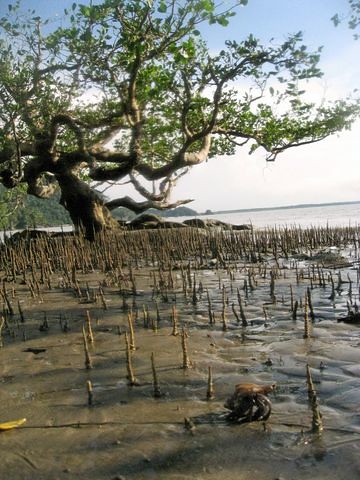 the Delima Trail (1 km) which was an easy walk through the mangroves. We both found it very interesting as the tide was out so it was neat to see the full mangrove along with the existing sealife (crabs, snails, etc). On our way back we also heard the probosis monkeys crashing through the trees. Later that night we took a stroll on the beach at sunset. We saw 3 bearded pigs eating at the edge of the beach & the forest. There is only one option for dining at Bako and they do a la cart buffet style where you pick up the items out of dishes and are charged per item. Not only were the prices inflated, but the food was down right putrid. Even the vegetable dishes were virtually inedible. Luckily they had some oranges for sale so after wasting our money on "dinner" we settled for the oranges. They also have a board you can order from, so perhaps that is better and we suggest you take that route if you go.
the Delima Trail (1 km) which was an easy walk through the mangroves. We both found it very interesting as the tide was out so it was neat to see the full mangrove along with the existing sealife (crabs, snails, etc). On our way back we also heard the probosis monkeys crashing through the trees. Later that night we took a stroll on the beach at sunset. We saw 3 bearded pigs eating at the edge of the beach & the forest. There is only one option for dining at Bako and they do a la cart buffet style where you pick up the items out of dishes and are charged per item. Not only were the prices inflated, but the food was down right putrid. Even the vegetable dishes were virtually inedible. Luckily they had some oranges for sale so after wasting our money on "dinner" we settled for the oranges. They also have a board you can order from, so perhaps that is better and we suggest you take that route if you go.  We decided to take it easy our second day and spend a bit of time at the beach. We spent 2 hours (2.5-3 km) hiking to Telok Pandan Kecil with a side trip to Telok Pandan Besar. The latter is a cliff side overlook and the former includes the trail down to a secluded beach. After our hike we rewarded ourselves with a bit of beach time and a swim in the warm water! We opted to take a boat back to our lodging to shower and get ready to head back to Kuching. While we were hanging out at the lodge we saw several macaque monkeys which were trying to steal food
We decided to take it easy our second day and spend a bit of time at the beach. We spent 2 hours (2.5-3 km) hiking to Telok Pandan Kecil with a side trip to Telok Pandan Besar. The latter is a cliff side overlook and the former includes the trail down to a secluded beach. After our hike we rewarded ourselves with a bit of beach time and a swim in the warm water! We opted to take a boat back to our lodging to shower and get ready to head back to Kuching. While we were hanging out at the lodge we saw several macaque monkeys which were trying to steal food  from the restaurant (very naughty indeed) as well as another bearded pig! On our walk to the jetty we came across another couple of macaques and finally we came close to the proboscis monkeys (YEA!)! We ended up seeing more wildlife in the last hour of our stay than we did during the first full day!
from the restaurant (very naughty indeed) as well as another bearded pig! On our walk to the jetty we came across another couple of macaques and finally we came close to the proboscis monkeys (YEA!)! We ended up seeing more wildlife in the last hour of our stay than we did during the first full day!
